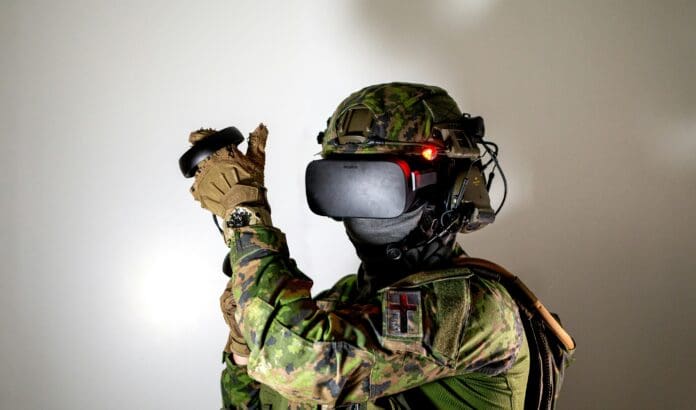This post is also available in:
 עברית (Hebrew)
עברית (Hebrew)
The U.S. Army is leveraging its support role with Customs and Border Protection (CBP) on the U.S.-Mexico border to test next-generation tactical technologies in an operational environment. While soldiers are not directly involved in enforcement or deportation actions, the deployment offers an opportunity to evaluate new equipment in conditions that are difficult to replicate in training facilities.
According to The Defense Post, among the systems being trialed are the Integrated Visual Augmentation System (IVAS) 1.2 headsets—an augmented reality platform designed for navigation, surveillance, and situational awareness. Built on Microsoft’s HoloLens platform, the IVAS headset includes low-light imaging, thermal sensors, and real-time data sharing capabilities, enabling improved coordination between soldiers and CBP agents during long-duration patrols, including nighttime operations.
The 1.2 model has addressed earlier complaints about user fatigue and discomfort, with enhanced ergonomics and streamlined controls. It is the result of a development collaboration involving the U.S. Army, Anduril, and Meta.
The deployment also includes DZYNE’s Dronebuster handheld system, a compact counter-unmanned aerial system (C-UAS) tool designed to detect and jam unauthorized drones. Weighing under 3 kg and requiring no external power, the Dronebuster identifies drone communication signals and can neutralize threats at distances of up to 2 km.
Supporting these efforts are other advanced tools, such as the Black Hornet 4 nano-drone, which provides real-time aerial reconnaissance, and Palantir’s Tactical Intelligence Targeting Access Node (TITAN), a mobile system that scans radio frequencies to detect nearby drone activity.
Soldiers are also equipped with upgraded remotely operated weapon stations and long-range communication radios, allowing them to alert border agents quickly when potential unauthorized crossings are detected.
The testing grounds span a wide range of terrain—desert, mountain, and swamp—covering over 1,600 km of border. Each soldier on duty may be responsible for a stretch of roughly 800 meters, often in areas that are inaccessible by vehicle.
Army officials emphasize that while the mission enhances border monitoring capabilities, it also serves as a real-world testbed for refining technologies aimed at future operational deployments in more complex combat environments.


























